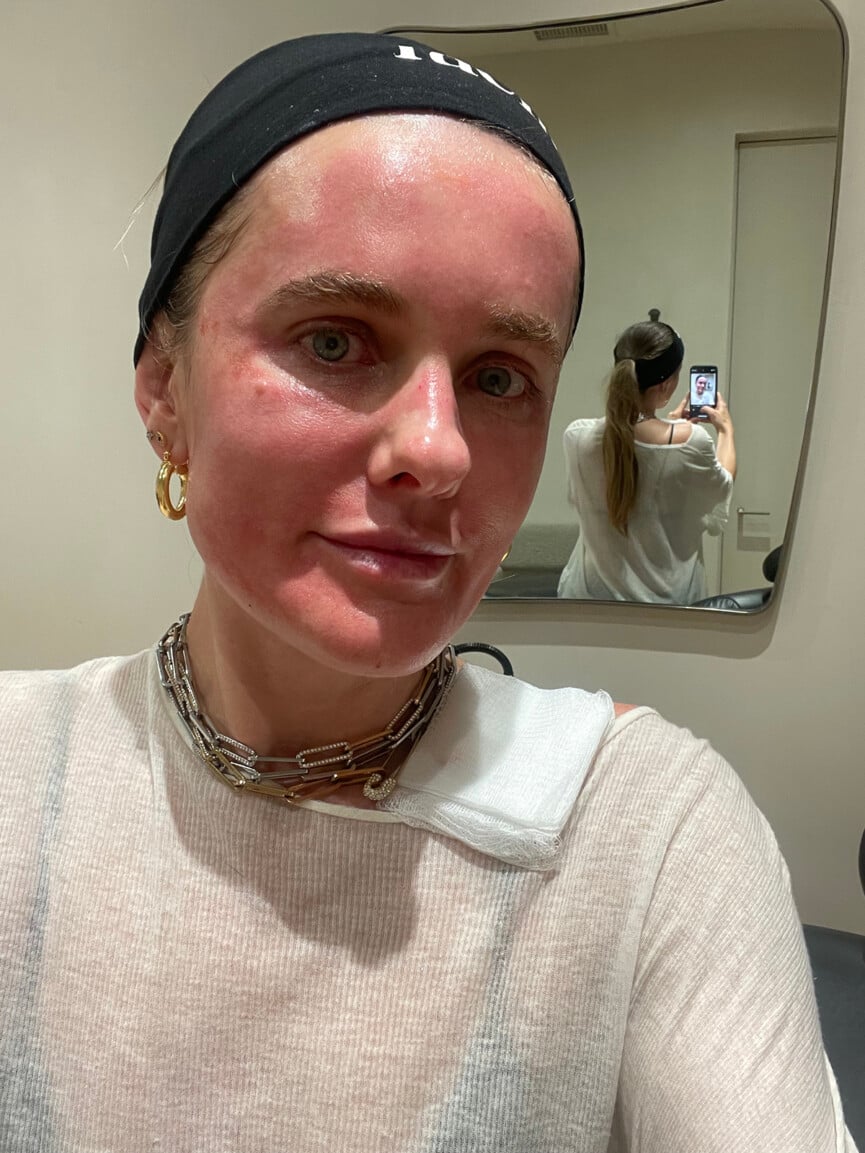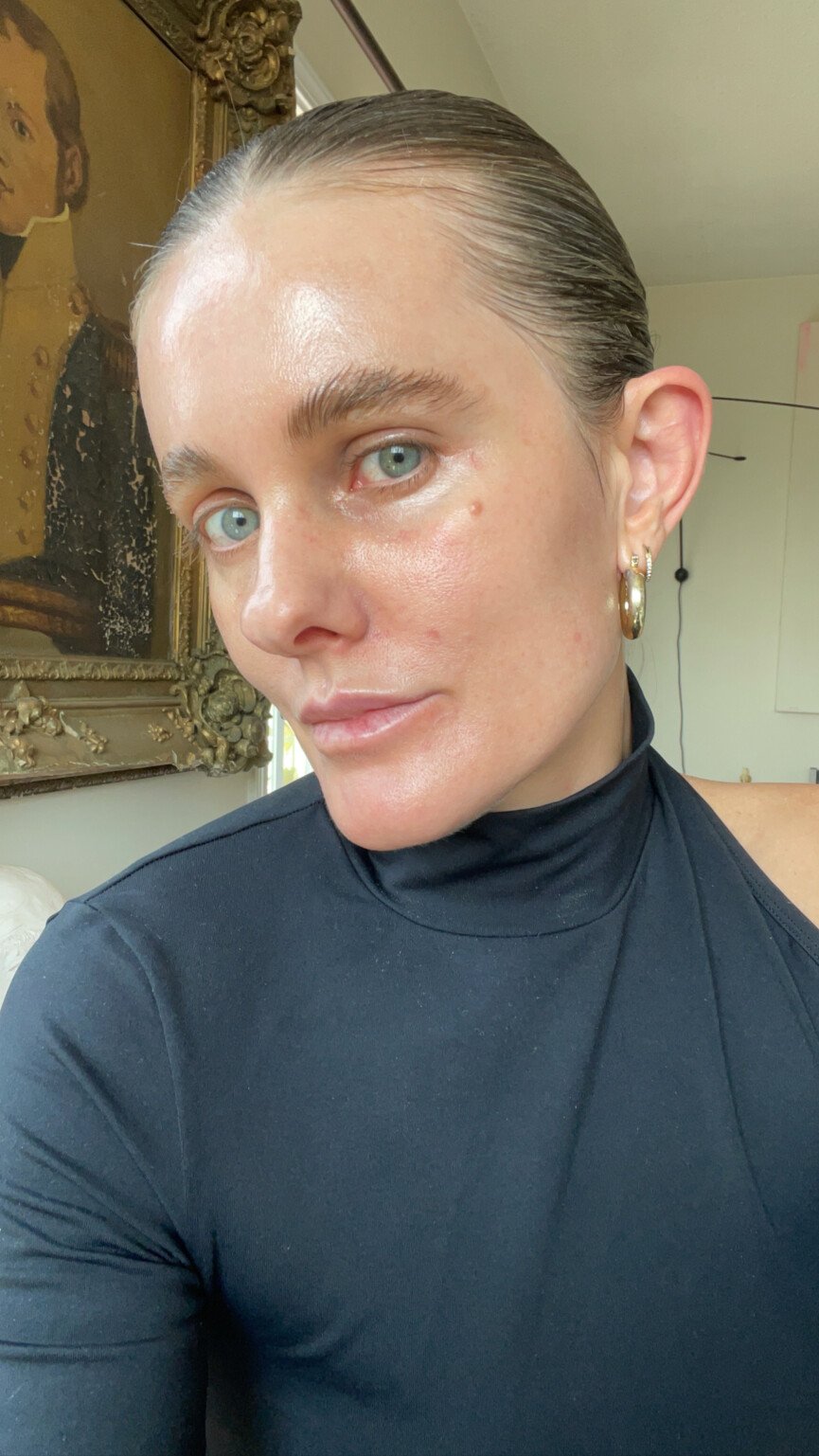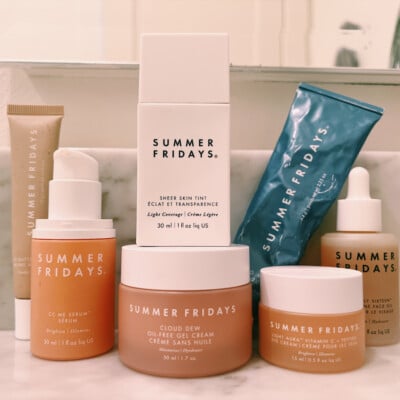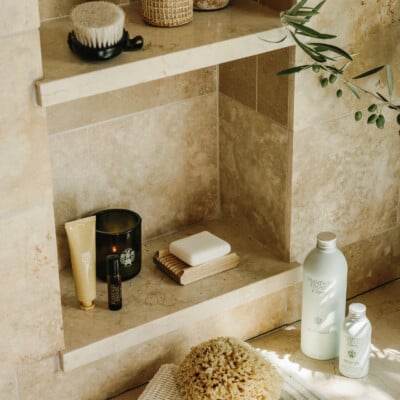If you’ve followed me for a while, you’ll know by now that I’m only too happy to test new innovations in beauty. Yes, we’re talking a thread lift, lasers, under-eye filler, lip filler, a “liquid facial”… the list goes on. Now, before you start thinking this is too much for one person, I didn’t really start on this experimental journey until I was in my 30s and I’m now 41 so all of these treatments have been spread out over the last decade. I’m also a huge proponent of at-home skincare and beauty tools like microcurrent to maintain optimal skin health—these are the hardworking products I swear by! Any dermatologist or esthetician will tell you how important it is for your skin to be in its best shape before you have a professional treatment, especially when you’re considering various lasers, a PDO thread lift, or one of my new favorites, microneedling with PRP.
Now, I have tried microneedling in the past (and loved it) and had also experienced PRP as a serum post a Clear & Brilliant laser, but I hadn’t tried the combination of microneedling with PRP injections before. After learning that my favorite derm, Dr. Nancy Samolitis—board-certified dermatologist and owner/co-founder of Facile Dermatology + Boutique—was now offering the treatment, I knew I had to give it a trial run, and I was not disappointed. I can honestly say microneedling with prp is a total gamechanger when it comes to skin texture, tone, and vibrancy.
If you’ve been thinking about the treatment, I tapped Dr. Samolitis to quiz her on all the commonly asked questions so you can make an informed decision but trust me on this one, it’s 100% worth it! Keep reading to learn more about what is microneedling with PRP, the benefits, who should get it, and so much more.

Dr. Nancy Samolitis is a Board Certified dermatologist with specialized training in cosmetic dermatology. In addition to providing care for general medical dermatology, she is also the owner/co-founder of Facile Dermatology + Boutique where she specializes in cutting-edge treatments for anti-aging, sun-damaged skin, and more.
Above you’ll find an image of my skin immediately after the microneedling with prp, and then a picture of my skin about 10 days post-treatment.
What is micro-needling exactly?
Microneedling (MN) is the use of a device with multiple small needles to create numerous punctures in the skin. This process allows enhanced penetration of topical medications applied to the skin and triggers new collagen production via wound healing. It has actually been around for over 100 years when needling was first used to treat acne scars, but the techniques and devices have evolved rapidly since the 1990’s when the first commercial MN roller was introduced. Over the past few years as the popularity of MN as a medical procedure has really exploded, the FDA has now only approved a few devices as safe to use in a medical setting. These devices are small, handheld tools with needles that vibrate with a direct vertical penetration into the skin. They have safety covers and disposable, sterile needle tips to prevent spread of infection.
What are the benefits of micro-needling?
The purpose is basically to create tiny wounds in the skin which create an environment where the cells are triggered to go into repair mode thereby removing damaged tissue and replacing it with new, healthy skin cells and the growth of new collagen. This is most beneficial in improving skin quality and texture by firming and plumping the dermal tissue.
How effective is micro-needling/PRP for acne and acne scarring?
Microneedling has really become the gold standard for treating acne scarring because it is effective, relatively painless with a quick recovery, and safe for all skin types. Traditionally, laser resurfacing was used for the treatment of acne scars and when you try to achieve the same wound depth with a laser (heat), you create a lot more pain, swelling, and recovery time. In my experience, patients are more likely to choose microneedling because, with either type of treatment, several sessions are usually required for optimal results.
Is it effective for hyperpigmentation and melasma?
Microneedling can be effective for hyperpigmentation and melasma, but not by itself. It does not inherently improve pigmentation, but can be used to deliver topical medication that leads to skin brightening. When the medication (in my office, we use topical tranexamic acid) is applied while microneedling, we are essentially driving it into the dermis where some of the more stubborn pigmentation lies. Unlike some lasers, microneedling is less likely to cause post-inflammatory pigmentation or worsening of melasma but should be used in combination with home skincare that prevents excess pigment from occurring.

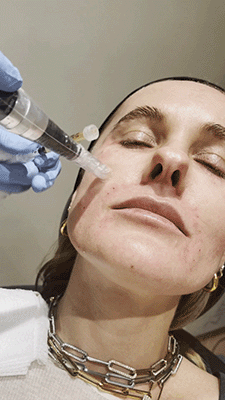
What about hair growth?
Microneedling alone is not typically used for hair growth although there are some anecdotal reports showing some efficacy (that means no large studies). As described with pigmentation, microneedling can be used on a regular basis to help drive in the application of a topical hair growth product such as minoxidil (Rogaine) or PRP. Because microneedling in the scalp can be messy and painful, we usually use PRP injections alone which has been shown to be effective in larger studies.
What skin types/concerns are suited to microneedling?
Almost anyone is a good candidate for MN treatment. It is very safe, can be used more gently or aggressively as needed and is relatively less painful, and has an easier, faster recovery period than most lasers or other skin resurfacing treatments. I have used microneedling to treat acne scars on patients as young as 12 and for wrinkles in patients as old as 85.
Who shouldn’t get it?
Someone with active, inflamed acne or other active skin diseases in the treatment area is not a candidate until the condition is under control with medical therapy. A person with severe hyperpigmentation would also not be a candidate. Because there is some risk that microneedling could aggravate pigmentation and some people create excess pigment so easily, it is not worth the risk when there are other therapies that are safer and more effective for pigmentation alone.

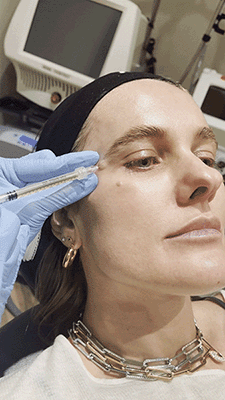
What is PRP?
PRP is “platelet-rich plasma” that is extracted from the blood. A blood draw is done in-office in a special type of tube that is spun in a centrifuge to separate the blood elements. The PRP is drawn up in syringes to apply to the skin treatment. Platelets are the type of cell that is concentrated in the solution and when there is an injury to the skin (via injection or with microneedling, laser, etc), the platelets become activated and release growth factors that aid in the healing process leading to the growth of new tissue whether it’s new collagen or triggering hair that has been stunted by hormones, stress or inflammation.
Why is it often paired with micro-needling?
Because microneedling is a safe and effective type of resurfacing, PRP has commonly been used in conjunction with it, but it can be used in combination with any kind of resurfacing where small skin injuries are created.
What are the benefits of pairing PRP with micro-needling?
As mentioned above, the process of microneedling both creates an injury that triggers the release of growth factors from platelets in PRP and helps to drive in the application of a topical product. Adding the PRP application to microneedling treatment will enhance collagen production and speed up the healing process.
What is the difference between applying PRP topically during micro-needling versus injecting it?
We are able to apply the PRP a little bit deeper and apply a larger amount of PRP to a focused area with injections. For example, I often will inject deeper acne scars with PRP. The injecting needle and fluid separation of bound down scar tissue create an injury under the acne scar to help lift it. This is a technique known as subcision and used to be used alone for the treatment of acne scars, but has been shown in split face studies to be more effective when combined with PRP injections.

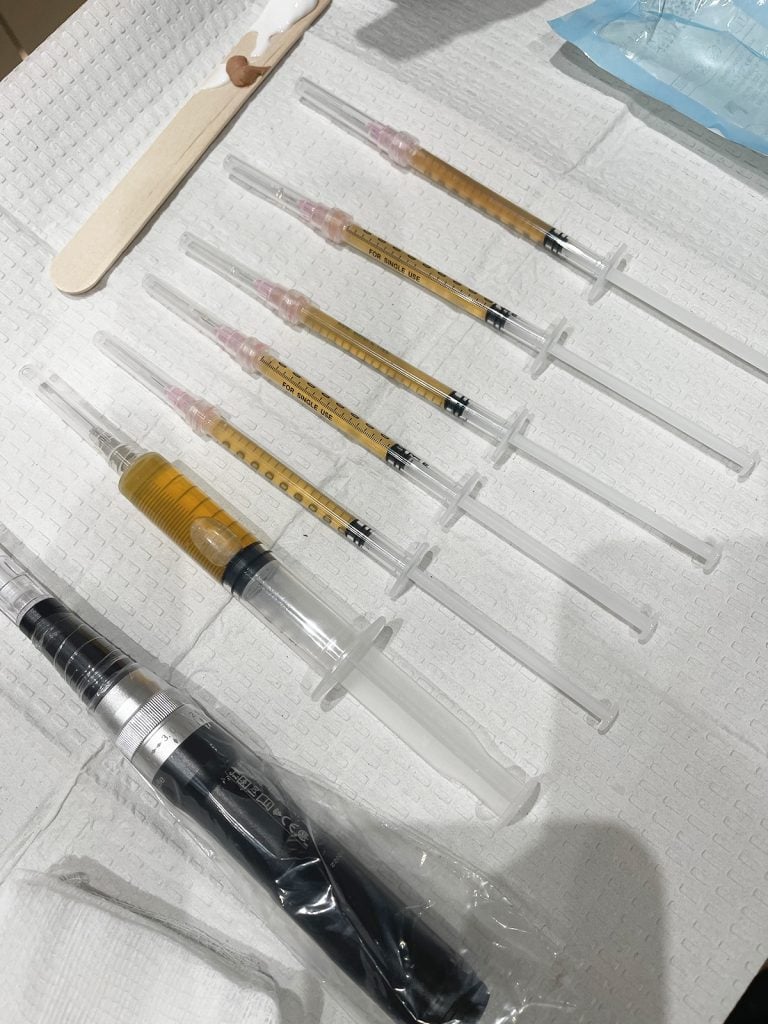
Can you outline your micro/PRP process and why you do both?
- Patient arrives at the office, numbing cream applied to the treatment area, blood is drawn and PRP processed.
- Skin cleaned with antiseptic technique, PRP injected into all areas where we want to concentrate on more collagen production—this includes acne scars, the skin around the eyes, fine lines/wrinkles, etc.
- Microneedling is then done on the full treatment area (often face, neck, chest) with topical application of PRP.
- Healing cream applied and post-care instructions given.
- For post-care, we recommend gentle cleansers and moisturizers with no active ingredients and only mineral sunblock and sun avoidance for at least three days until the skin appears back to normal.
With that in mind, how should you prepare your skin for microneedling/PRP, if at all?
There is no specific preparation needed unless you have hyperpigmentation or melasma, in which case we will often prescribe a brightening treatment to be used before and after the treatment session.
What is the downtime?
Most people experience redness and sensitivity that feels like a sunburn for the first day or two. There may be some mild flaking or peeling and the redness can last for up to three to four days. Some people may have some pinpoint bruising especially in areas where we do the treatment more aggressively (over scars) or on delicate areas like the under-eyes, upper lip, and bridge of the nose.

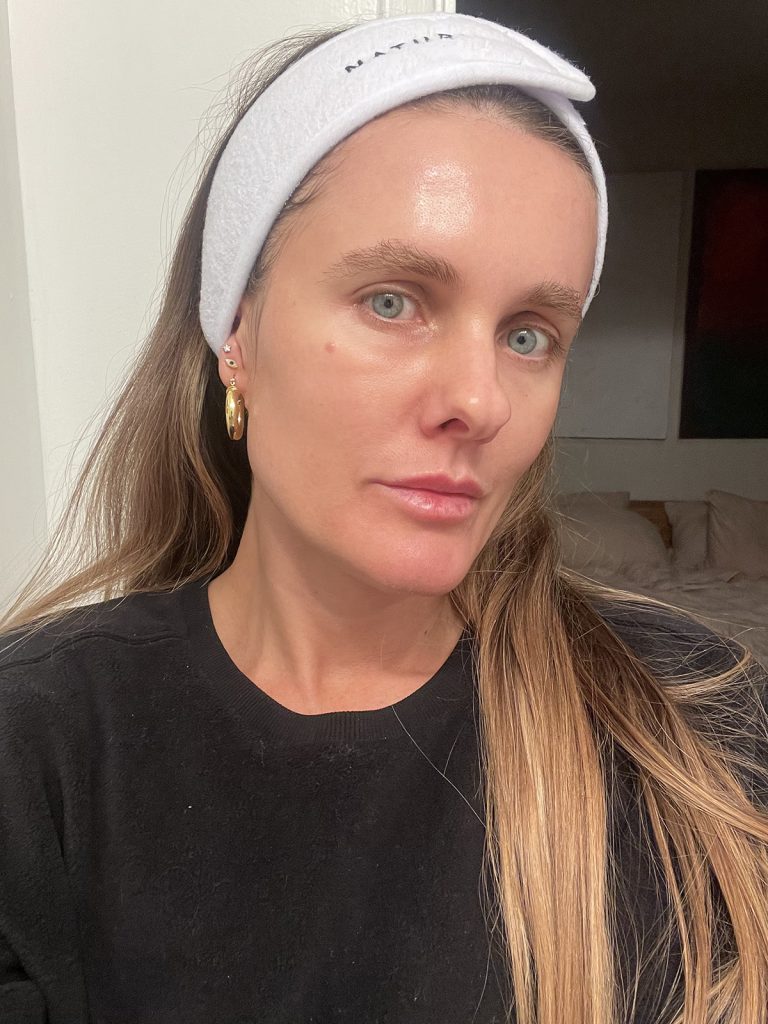
How should you care for your skin post-treatment?
Only gentle skincare products are recommended. We suggest the Facile Core Four products, or a barrier cream such as La Roche Posay Cicaplast for heavier moisturizing.
When can you expect to see results?
Most people notice smoother, softer skin after about two weeks, but full results can take up to six months and require a series of at least four treatments.
How many treatments should you get?
At least four, but more severe scarring or wrinkles may require more. There is no limit to the number of treatments that you can do and I always suggest quarterly treatments for long-term skin anti-aging maintenance.
How much does it cost?
The cost will range greatly depending on geographic location. We charge $475 for microneedling alone and $1500 for microneedling + PRP. We also have package price discounts for a series of four sessions to encourage patients to do enough treatments to reach their goals.
What is the difference between in-office micro-needling and at-home procedures?
My concern with at-home microneedling devices is that the needles will typically be dull after one session, so reusing them can cause more discomfort, irregular tears in the skin instead of clean, sterile wounds, fewer results, and possible spread of infection if they are not sterilized properly. There is no FDA regulation or approval of at-home microneedling devices. Some home devices come with serums that are applied in conjunction with microneedling or some people may use their own skincare products in conjunction with microneedling at home. I don’t recommend this because most skincare serums/ingredients are not meant to be applied to the deeper layers of the skin and may be more likely to cause allergic reactions when used this way. There are several published case reports in the medical literature of this occurring.


